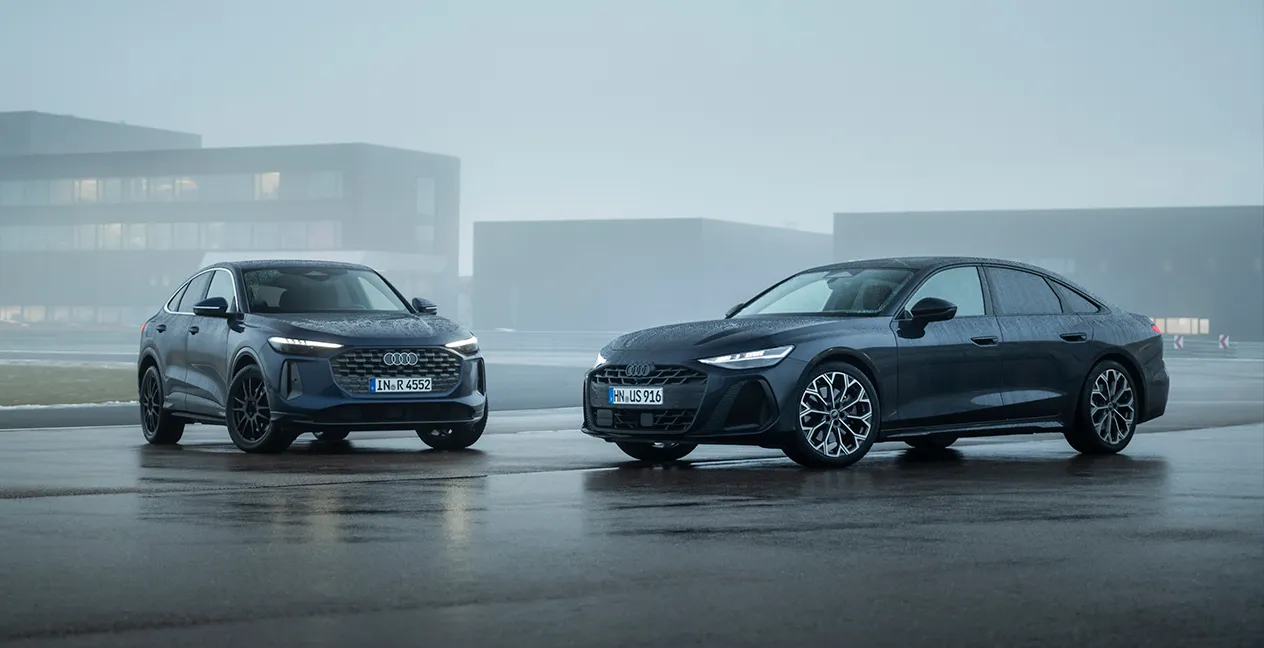
Created by Lucas Luís at Thursday, 27 November 2025
New V6 TDI boosts power of Audi Q5 and A6
Audi has once again raised the bar in the premium segment, presenting a significant evolution of its three-litre V6 TDI engine, now available for the Audi Q5 and Audi A6. The new generation of the powerplant introduces improvements in response, efficiency and performance thanks to the combination of MHEV plus hybrid technology and a new-generation electric compressor.
More immediate power and greater efficiency
The new V6 TDI delivers 220 kW (299 hp) and 580 Nm, but the highlight lies in how this power is delivered. The brand integrated three electrified components that work together to provide stronger starts, quicker acceleration and reduced consumption. The MHEV plus system combines:
Powertrain generator
Belt alternator starter
Lithium iron phosphate battery
This setup enables partially electric driving at low speeds, such as in urban traffic, parking or steady-flow situations, and provides up to an additional 18 kW (24 hp) and 230 Nm of immediate support during starts and overtakes.
During deceleration, the system recovers up to 25 kW of energy, improving overall efficiency and reducing fuel consumption.
New-generation electric compressor
One of the major innovations is the introduction of the electric compressor working in conjunction with the MHEV plus system. This technology, integrated for the first time into this generation of the V6 TDI, virtually eliminates turbo lag and ensures a more linear response across the entire rev range.
The result is significantly faster acceleration: in the first 2.5 seconds, the vehicle covers an extra car length compared to the previous generation. The compressor can reach 90,000 rpm in just 250 milliseconds, contributing to an increase in boost pressure that occurs nearly a full second earlier, generating acceleration very close to that of an electric motor.
Thanks to the new internal design and a permanent-magnet synchronous motor, the compressor now operates over a much wider range. The engine delivers power continuously, with particular emphasis on low-end torque and responsiveness during recoveries.
Lower environmental impact with HVO 100 fuel
Another important update is compatibility with HVO 100 fuel, a sustainable synthetic diesel that meets European standard EN 15940. Produced from waste and used cooking oils, it allows for a reduction of between 70% and 95% in CO₂ emissions compared to conventional diesel.
This fuel can be used pure or blended, and vehicles produced at the German factories in Ingolstadt and Neckarsulm will now leave the factory already filled with HVO.
Consumption and emissions
According to official German market data, the new engines achieve:
Audi Q5: combined consumption between 6.8 and 5.8 l/100 km; emissions between 177 and 153 g/km
Audi A6: combined consumption between 6.1 and 5.3 l/100 km; emissions between 165 and 140 g/km
These figures place both models in CO₂ classes E to G, depending on configuration.
Source: Press Release | Audi






